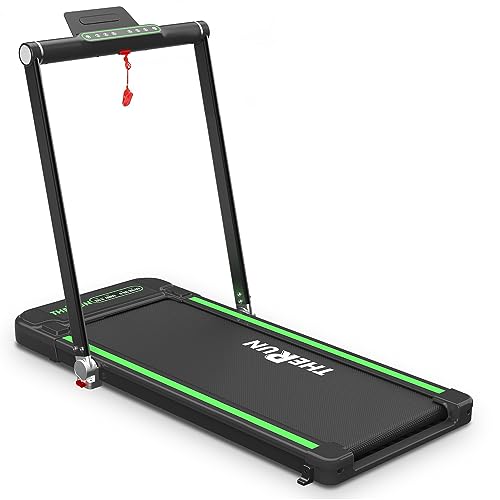10 Simple Steps To Start Your Own Tread Mill Business
 Cyril Puckett
0
7
Cyril Puckett
0
7
The Treadmill: A Comprehensive Guide to Understanding and Utilizing This Fitness Machine
Treadmills are a staple in fitness centers and homes alike, acting as an effective tool for cardiovascular workout. With their adaptability and range of features, treadmills deal with users of all fitness levels. This article explores the ins and outs of treadmills-- covering their advantages, types, use tips, maintenance, and far more.
The Benefits of Using a Treadmill
Making use of a treadmill can offer various health benefits, making it a popular option amongst physical fitness lovers. Below are some crucial benefits:

Cardiovascular Health: Regular treadmill usage can improve heart health by increasing aerobic capability and cardiovascular endurance.
Weight Management: Treadmills allow users to burn calories efficiently, assisting in weight-loss or management.
Convenience: With the capability to work out inside, treadmills get rid of environmental barriers, like weather and time restraints.
Flexibility: Users can control speed, incline, and exercise period, permitting them to tailor their workout regimen to fit their requirements.
Joint Impact: Many modern-day treadmills offer cushioning, which can decrease the influence on joints compared to running on hard surface areas.
This detailed guide examines the various kinds of treadmills and what features to think about when acquiring one.
Types of Treadmills
Picking the ideal kind of treadmill depends upon specific physical fitness goals, spending plan, and available area. Here are the various ranges:
1. Handbook Treadmills
- Definition: These treadmills run without motors; users power the belt through their motions.
- Benefits: Typically more inexpensive and energy-efficient.
- Downsides: Limited functions and less stability compared to motorized alternatives.
2. Motorized Treadmills
- Definition: Equipped with motors to control belt speed and slope.
- Benefits: Versatile includes like predetermined programs and digital screens.
- Downsides: More costly and require electrical outlets.
3. Folding Treadmills
- Meaning: Treadmills that can be collapsed to save area when not in use.
- Advantages: Ideal for those with limited space.
- Drawbacks: May not be as tough, depending on the design.
4. Industrial Treadmills
- Definition: High-quality, durable machines developed for regular usage in fitness centers.
- Benefits: Built to withstand strenuous exercises with features fit for varied training needs.
- Drawbacks: Generally more pricey and larger.
5. Smart Treadmills
- Definition: Treadmills equipped with wise technology that tracks workouts and offers virtual training.
- Benefits: Interactive features improve the user experience.
- Disadvantages: Higher expenses and potential for technical concerns.
Functions to Consider When Buying a Treadmill
When buying a treadmill, it's crucial to examine its features according to individual requirements and budget plan. Vital functions include:
Motor Power: Measured in horsepower (HP); a motor in between 2.0-- 3.0 HP is ideal for the majority of users.
Running Surface: The belt size need to accommodate your stride. A surface area of at least 20" x 55" is typically suggested.
Slope Options: Look for a treadmill offering various slope levels to mimic outside running and boost workout strength.
Weight Capacity: Ensure the treadmill can support the user's weight; most can accommodate weights between 250 lbs and 400 pounds.
Cushioning: Good quality cushioning effects walking or running convenience and can assist prevent injuries.
Foldability: If area is a problem, think about a electric treadmill for sale (http://119.28.151.66:3000/treadmill-sales9058) that can be folded.
Innovation: Features like heart rate monitors, exercise programs, and Bluetooth connectivity can boost the user experience.
Table: Key Features and Considerations
| Feature | Significance |
|---|---|
| Motor Power | Essential for consistent performance and user weight capacity. |
| Running Surface | Impacts user comfort and stride length; bigger surface areas are better for taller individuals. |
| Incline Options | Enables varied exercises and targets various muscle groups. |
| Weight Capacity | Vital for safety and sturdiness; choose a model that supports your weight. |
| Cushioning | Reduces joint impact and makes workouts more comfortable. |
| Foldability | Essential for users with restricted area. |
| Technology | Boosts workout experience and can offer important tracking information. |
Tips for Effective Treadmill Workouts
To make the most of the advantages of using a treadmill, think about the following tips:
Warm-Up and Cool-Down: Always begin with a 5-10 minute warm-up and surface with a cool-down to avoid injury.
Differ Your Workouts: Mix walking, jogging, and running to keep things fascinating and work different muscle groups.
Incorporate Incline: Use slope settings to challenge yourself and increase calorie burn.
Stay Hydrated: Keep water nearby to remain hydrated during your exercises.
Listen to Your Body: Pay attention to any pain or tiredness; rest when essential.
Treadmill Maintenance Tips
To ensure longevity and optimum performance of a treadmill, regular maintenance is important. Secret upkeep practices include:
Lubrication: Frequently oil the running belt for smoother operation.
Cleaning up: Wipe down the machine after each use to avoid dust and sweat accumulation.
Tightening: Regularly inspect and tighten loose bolts or screws.
Check the Belt Alignment: Ensure the belt is lined up correctly, changing as required for even use.
Often Asked Questions (FAQs)
1. How typically should I utilize a treadmill for weight reduction?
Utilizing a treadmill for a minimum of 150 minutes of moderate-intensity aerobic exercise per week can add to weight-loss.
2. Can I stroll on a treadmill every day?
Yes, walking on a treadmill daily can be helpful; nevertheless, incorporating rest days is a good idea to avoid overuse injuries.
3. What should I use when using a treadmill?
Select comfortable, moisture-wicking clothes and encouraging shoes to improve your workout experience.
4. Is it much better to walk or work on a treadmill?
Both walking and running offer unique advantages; the very best option depends upon your physical fitness level, objectives, and individual choice.
5. Exist particular treadmills designed for little spaces?
Yes, folding treadmills and compact designs appropriate for small spaces. Always examine measurements before acquiring.
The treadmill stays a flexible and extensively utilized piece of physical fitness devices. Its blend of convenience, versatility, and effectiveness makes it ideal for users ranging from novices to skilled athletes. By understanding the various types and functions, along with integrating different workouts, users can optimize the advantages of their treadmill regimen. Whether for cardiovascular training, weight reduction, or just preserving an active way of life, treadmills offer a trusted opportunity for attaining physical fitness objectives.


